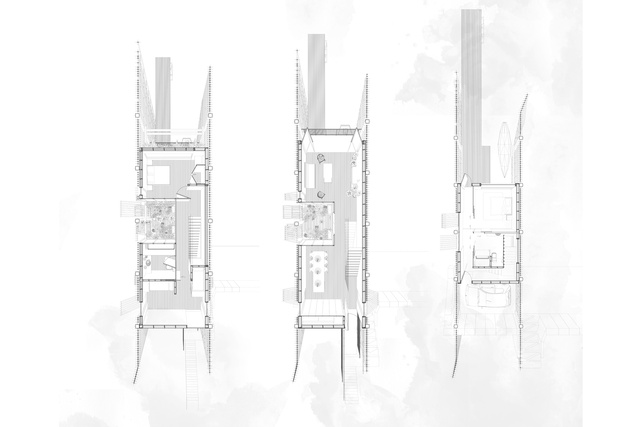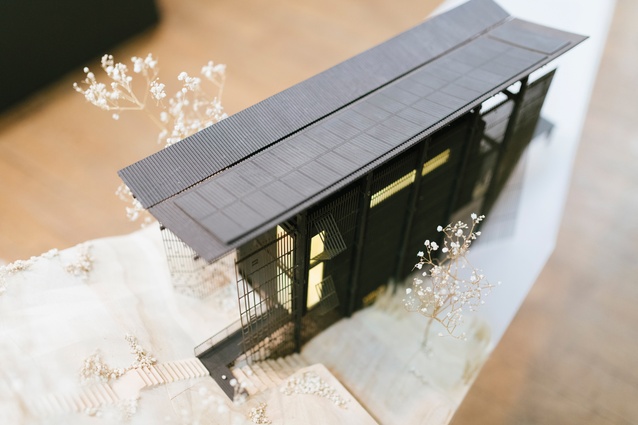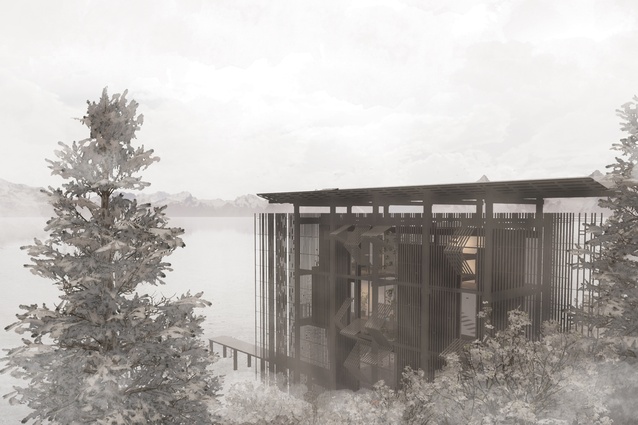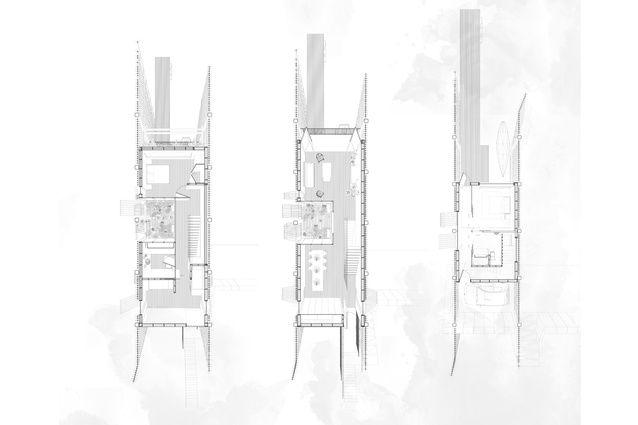Crit: Thermal consequences
In a world where the traditional hearth has become a subjective accessory and achieving a warm and comfortable indoor environment is focused on machines, how do we design better to ensure we build better? Victoria University of Wellington MArch student Emily Newmarch’s response won the top prize in the 2018 New Zealand Institute of Architects Student Design Awards.
To tackle this question, the Master’s project ‘Climatic Conscience for Dwelling Design’ renegotiates the conflict between poetic and pragmatic approaches to architectural design, as it reflects on the concept of the ‘New Zealand Dream’ to dwell within the landscape. It compares the disconnection between our uniform, existing building stock and its spread across a country of many micro-climates to the pattern of vernacular architecture across similar northern-hemisphere climates. In response, the project focuses on the potential to exceed the minimum thermal envelope requirements whilst actively engaging in the relationship between architecture and landscape.
This project is located within the Queenstown Lakes District because of its extreme climatic conditions and recent building boom. Here, a building must cope with temperatures of up to 34ºC and as low as –8.4ºC, increasing the need to ensure a high-performance building envelope. Furthermore, the increase in tourism and the desire to live within the snowy mountains have led to a growing spike in construction. From 2017 to 2018, in relative scales of per 10,000 people, the district issued seven times more building consents than did Auckland. This growth rate, coupled with the area’s climatic conditions and existing low building minimums, will result in a large number of underperforming homes with expensive running costs being added to our building stock.
To address this issue and its context, the research engaged with quantitative and qualitative methods of exploring both pragmatic and poetic approaches to architecture. The objective was to explore published literature and architectural media systematically, both locally and globally, whilst combining methods from building science and architecture to re-imagine the notion of dwelling in the landscape.

This process informed the design and simulation of a cabin-scale design, which investigated the thermal consequences of different construction systems and aesthetic styles. This small-scale investigation streamlined the application of the research into a three-bedroomed, two-bathroomed house, which dealt with the potential of becoming a temporary rental within the increasingly popular Airbnb market. Full-building simulations were completed through ARCHICAD’s built-in energy tools and more-refined analysis of junctions was completed using a pilot licence for the EcoDesigner STAR Plugin.
Through the development phase, the design was influenced by Peter Zumthor’s ‘Mining Museum’, a project which engaged with a similar history of people and place to that of the Queenstown Lakes District. The provocative, aesthetic application of an external post-and-beam timber structure removed the load-bearing requirements from all building envelope elements, allowing the thermal performance of the building envelope to take a higher priority.
Furthermore, the design was refined by questioning the role of each window, composing the rainscreen pattern to blend into the landscape and careful material selection. The final building, as a speculative and simulated design, hopes to become an example of the potential for designers and architects to push boundaries with aesthetics and performance-based design decisions.
This article first appeared in Architecture New Zealand magazine.














